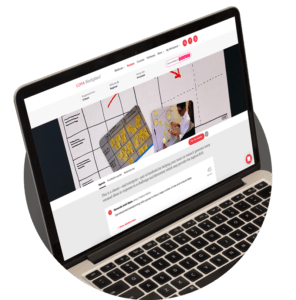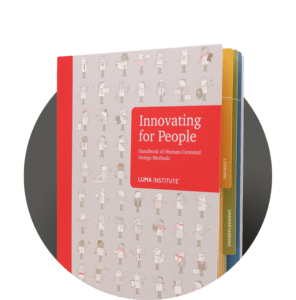Method overview
While “blue sky” freedom might seem desirable at the start of a project, it is often within constraints that novel ideas are sparked. It may seem counterintuitive to impose limits on the creative process, but when a problem is too broad, or you’re having trouble breaking away from conventional thinking, structure can actually help.
If you want to generate many wide-ranging ideas in a short amount of time, the structure of a Creative Matrix is useful because it stimulates cross-pollination by providing a template for generating new ideas where topics intersect. In a Creative Matrix grid, each cell represents the intersection of two disparate categories. It’s best to use the columns as categories related to people (e.g., personas, market segments, or problem statements) and the rows as categories for enabling solutions (e.g., technologies, environments, or policies). You can then use this “mash-up” of categories to help generate a wide range of concepts in each cell.
The benefits of this method
- Helps you generate a large number of ideas.
- Promotes divergent thinking.
- Helps you think of new and unusual ideas.
- Invites input from all team members.

Quick guide
- Identify a design challenge in need of fresh ideas.
- Make a poster showing a large grid (max. 5 x 5 cells).
- Designate columns: Categories related to people.
- Designate rows: Categories for enabling solutions.
- Form teams. Hand out grids. Introduce the topic.
- Give each participant a pen and a sticky note pad.
- Ask them to ideate at the intersections of the grid.
- Instruct them to write one idea per sticky note.
- Start the clock. Limit the time to 15-20 minutes.
Helpful hints
- Urge the participants to draw pictures of the ideas.
- Encourage the teams to fill every cell of the grid.
- Tally the number of ideas per team. Reward quantity.
Combining LUMA methods into design recipes
The methods in the LUMA System are great on their own, but they are really powerful when combined into design recipes. Just like when you combine ingredients to make a tasty meal, you can also combine design methods to address challenges such as improving workplace culture or uncovering customer insights.
An example of a recipe from LUMA Workplace®:


Want to learn more about LUMA methods?


